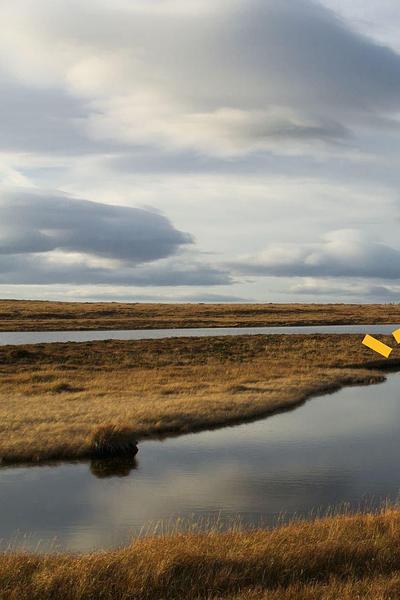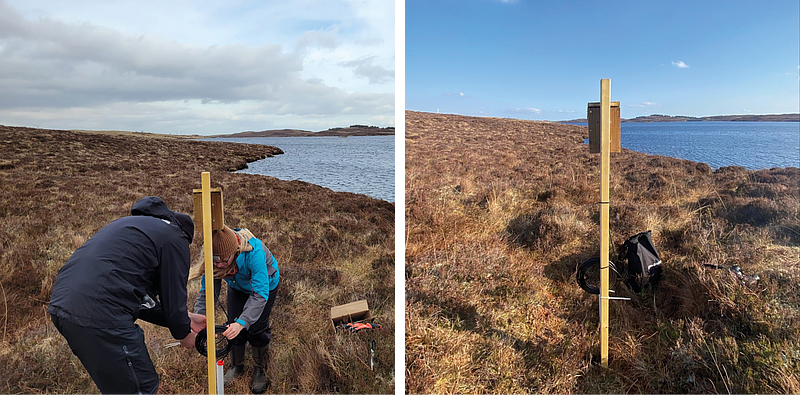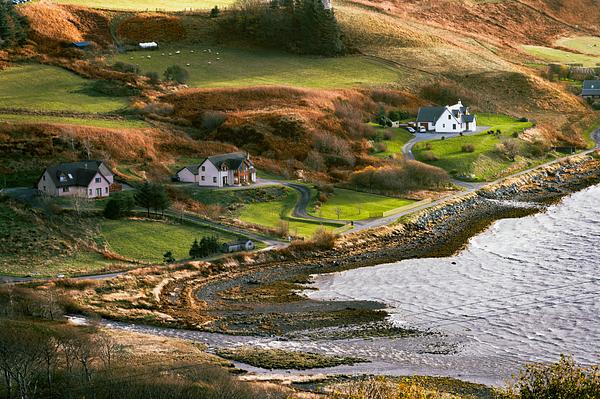
Smart cities have been promoted for some time as a way of using technology and data to better understand how a city functions and gain insight into how services and operations can be improved to the benefit of those who live and work there. FarrPoint believes that this concept can be applied to all size of ‘place’ and even our most remote and rural places can obtain benefit from smart technology. The challenge here is to identify the use cases; is there enough to make a case for investment?
FarrPoint engaged at a grassroots level with (this will open in a new window)The Pairc Trust in Scotland’s Western Isles to build an understanding of the key challenges facing the local community, and to then consider if IoT technology could help address these challenges. The work was funded by the Scottish Futures Trust and the Scottish Government, and involved a number of stakeholders including The Pairc Trust, (this will open in a new window)NatureScot, (this will open in a new window)Peatland ACTION, and (this will open in a new window)Scottish Water.
Through community interviews and discussions, a number of areas were identified where IoT technology solutions could deliver significant benefits to the local community, as well as the environment and wider society.
Peatland Regeneration IoT Monitoring Trial
Restoration of a local peatland site was identified as a key opportunity for IoT technology to deliver significant positive local benefits – through improved biodiversity as well as significant benefits to the environment through reducing CO2 emissions.
Scottish peatlands store 1.7 billion tonnes of carbon, but with 80% of Scotland’s peatland being damaged, maintaining and improving the quality of peatland is essential to avoid carbon emissions. Peatland covers a large proportion of the Western Isles and a suitable site for restoration was identified for this monitoring trial to take place.
The trial was designed to capture reliable real time information around the quality of peatlands before, during and after the restoration project. FarrPoint designed an innovative IoT solution to monitor the water table and help improve the understanding of the impact of peatland restoration, as well as cutting down on the resource and emissions costs of sending people to the remote peatlands locations to collect measurements.
The team installing IoT sensors to monitor the health of peatlands in the Western Isles, Scotland

FarrPoint engaged with NatureScot and Scottish Water, to instal 11 sensors in strategically identified locations to enable monitoring of the peatland condition. The (this will open in a new window)Peatlands Monitoring Dashboard(this will open in a new window) is now live, with information from the sensors providing stakeholders with accurate data in real time with no need to physically visit these remote sites.
This work aligns with the Scottish Government’s £250 million, 10-year peatland restoration initiative, to significantly reduce carbon emissions and support biodiversity as part of its climate change plan. The Peatland ACTION funded restoration work around Loch Orasaigh has been phased over several years and the FarrPoint IoT sensors are currently gathering a baseline dataset prior to restoration of this area.
To find out more about this project click here.
Peatland restoration represents a cornerstone of our action to tackle the twin crises of climate change and biodiversity loss. Restoring Scotland’s iconic peatlands can help us sequester and store carbon from the atmosphere, support biodiversity and provide good, green jobs – often in rural communities. Since the launch of the Peatland ACTION programme in 2012, around 39,000 hectares of degraded peatlands have undergone restoration in Scotland. We are committed to significantly increasing the rate of restoration and have invested £250 million to fulfil our commitment to restore 250,000 hectares of peatland by 2030. This innovative project, which has been awarded £60,000 from Scottish Government’s Digital Directorate, highlights how new and digital technologies will be crucial in helping us deliver our net zero ambitions.
Historic Document Preservation and Traffic Monitoring IoT Solutions
This use case with the Pairc Trust community was at a local historic document storage facility. The community was concerned that environmental factors such as changes in humidity could be destroying important historic documents in this remote facility. FarrPoint installed sensors to track humidity and temperature levels, and the frequency of storage access. This gave reassurance to the community by providing new environmental data and automatic alerts to allow the community to take action when humidity levels rose above the threshold.
The ability to monitor humidity in our document store has been invaluable. With the site being unmanned and remote from our main archive and museum the IoT sensors provide us with door access data and continuous environmental stats which in our climate is the most critical factor for the safe storage of historic heritage documents. It’s an excellent low running cost solution and means we don’t need more expensive internet connectivity.
The community was also concerned with speeding traffic within the local area. In order to support a case for safety intervention from the Local Authority or (this will open in a new window)Transport Scotland, they required robust evidence that this was an issue. FarrPoint installed a proof-of-concept IoT sensor to understand traffic speeds and volumes. However, through the testing of this use case, the challenges of implementing this solution in remote and harsh environments meant that the data collected was insufficiently robust. Nevertheless, valuable lessons were learned in this trial around the suitability of sensors, remote power, weather, and local maintenance of equipment which was all fed back to the community and project sponsors.
Image of the Western Isles

A comprehensive evaluation of the pilot found the technology could result in:
· a reduction in the cost of monitoring the peatland site.
· a reduction in the environmental impact of monitoring by removing the need to travel to the site, as well as reducing the disruptive impact of visits on the natural peatland.
· an improvement in the quality and timeliness of the monitoring data.
· an enhanced ability to remotely monitor issues with sensors.
FarrPoint continues to provide specialist advice and support regarding these projects – including developing and monitoring dashboards for the peatland stakeholders and Pairc Trust. Alongside this, FarrPoint has developed a Benefits Realisation approach which will be used to evaluate the project and its use cases to understand what the impact the use of IoT technology, and smart places can have in remote and rural communities.
If you are interested in hearing more about this project or learning about our IoT and smart places services, get in touch to discuss.
Connectivity is important. It drives business and society, bringing communities and commerce together. That's why we use our insight and experience to connect people and business.